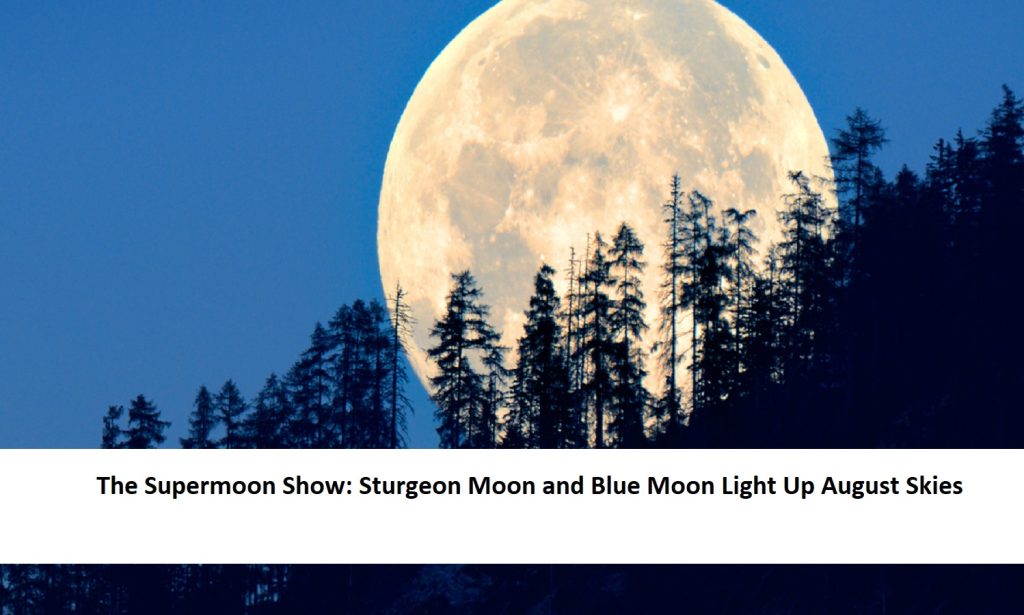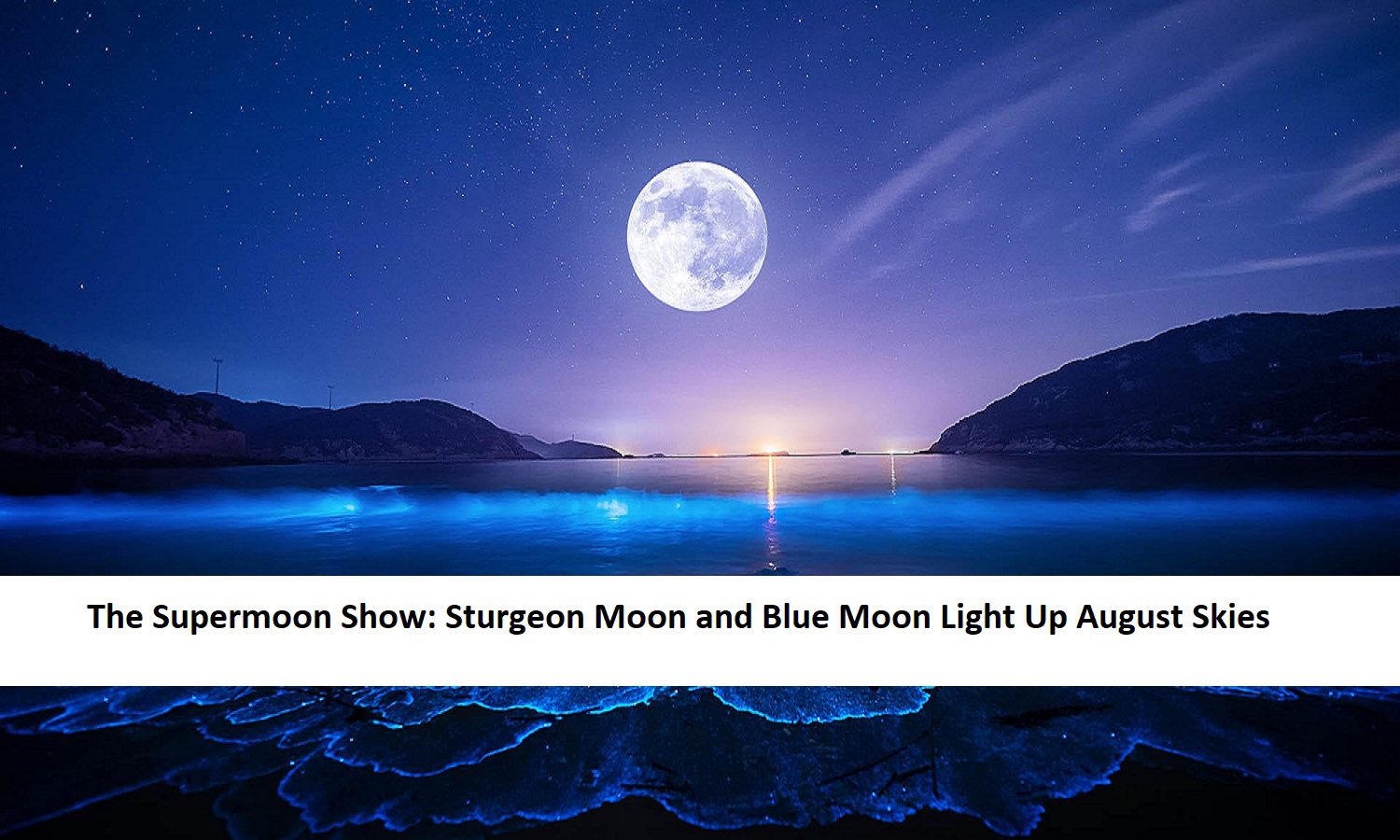The Supermoon Show: August is a month moon lovers adore for its heavenly supermoons. The Sturgeon Moon will appear on Tuesday, August 1. The Blue Moon will be the finale on August 30.
But these aren’t like typical full moons. They’re both supermoons, part of a series of four lunar events starting with the Full Buck Moon on July 3.
In the Sky reports the Sturgeon supermoon will rise in New York City at 14:31 EDT (1831 GMT) and set on Wednesday, August 3, at 5:11 EDT (9:11 GMT). After the Sturgeon’s show, the moon will slowly fade until it looks like a fading moon. The moon will rise and set an hour later each day until the next new moon on Wednesday, August 16, 2023.
During the new moon phase, the moon will be dark and rise and fall quietly at 6 a.m. and 6 p.m. A time when the moon avoids the night sky.
After this calm time, the moon will face Earth again. This is the beginning of a process called “waxing” in astronomy. The next supermoon is the Full Blue Moon on August 30. In NYC, it will rise at 19:10 EDT (23:10 GMT) and set at 06:46 EDT (11:46 GMT) on August 31.
What makes these August full moons supermoons? How are they different from regular full moons?
“Supermoons” occur due to the moon’s elliptical orbit around Earth, not a perfect circle. During its 27.3-day trip, the moon’s distance from Earth changes, making it look about 14% bigger or smaller.
A supermoon occurs when the moon is full and near its perigee during its 29.5-day lunar cycle. A supermoon is a perigean full moon, but it doesn’t have to be very close to Earth.


Fred Espanak, an eclipse expert, said the moon will be about 222,158 miles (357,530 km) from Earth during the Full Sturgeon Moon. This is different from its usual distance, about 238,000 miles (382,900 km). The perigee coincides with the Full Sturgeon Moon on August 2 at 1:52 a.m. EDT (5:52 a.m. GMT).
Almanac estimates the Blue Moon on August 30 will be about 222,043 miles (357,343 km) from Earth. This supermoon is the closest and brightest of 2023. From Earth, it will make the moon about 25% brighter and about 9% bigger. If you haven’t seen the moon before, you may not notice these changes immediately.
The supermoon season ends on September 28 with the Full Corn Moon, five days after the September equinox, marking the end of summer in the northern hemisphere. Next year, no supermoon show like this one. In 2024, only two supermoons: September 18 and October 18.
Also Read: Kim Pegula Returns: A Heartwarming Comeback to Buffalo Bills Training Camp After Heart Attack
Our Reader’s Queries
When to see supermoon August 2023?
In 2023, we’re in for a rare treat – two supermoons in the month of August. The first one lit up the sky on August 1, and the second, also known as a Blue Moon, will make an appearance on August 30-31. It’s not often that we get to witness such celestial wonders, so mark your calendars and make sure to catch a glimpse of these magnificent supermoons.
Where can I see supermoon?
During the lunar phenomenon, the Moon’s orbit comes closer to Earth, causing it to look bigger and brighter than usual. The observatory recommends open areas like the Marina Barrage and East Coast Park for the best view of the supermoon.
How to see Harvest Moon 2023?
The ‘Super Harvest Moon’ will be fully illuminated at 4:59 a.m. EDT on Friday, September 29, 2023. The best time to see it will be during moonrise later that day, at dusk in your location. Europe will also have a chance to view the Super Harvest Moon the next evening.
What time is the blue supermoon in 2023?
The supermoon is expected to show up at 9:36pm EDT on Wednesday (01:36 GMT on Thursday) and will linger until Thursday, setting just before the sunrise at 6:46am EDT (10:46 GMT). According to NASA, the supermoon will “appear opposite the Sun” on Wednesday in Earth-based longitude.

